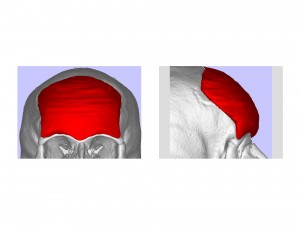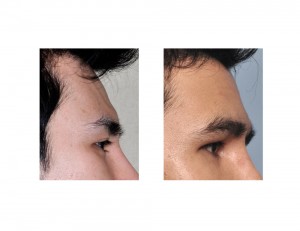Background: The male forehead is uniquely different from that of females. It has more prominent brow bones, a well defined brow break and a forehead that has no more than 10 to 20 degree angulation backward into the frontal hairline superiorly. This is quite different from a female’s forehead which ideally has little to no brow prominence and a more vertical and convex forehead shape.
Forehead augmentation is less common in men than females. Usually most men who present for aesthetic forehead surgery have brow bones that are too prominent and they want them reduced. But occasionally a man may want a more masculine forehead shape that has the aforementioned male forehead features as well as some increased width.
Traditionally, reshaping a forehead using an augmentation method has been done using bone cements. Through a full coronal incision, the bone cement is mixed, applied and shaped through wide open exposure. This allows for the best shape creation and to eliminate the risk of any edge or transitional material concerns into the surrounding tissues. But such hand shaping must rely on the surgeon’s skill and experience at creating the desired forehead shape.



The use of custom implants for the craniofacial area continues to grow and expand and its use in the forehead represents another example of its growing role in aesthetic facial surgery.
Case Highlights:
1) Forehead augmentation in men is designed to increase the prominence of the brows and decrease the posterior angulation of the forehead.
2) Forehead augmentation can be done using either intraoperatively applied bone cement or preformed custom implants.
3) Forehead augmentation with custom implants made from the patient’s 3D CT scan provides an optimal fit to the bone and the best smoothness and symmetry in the implant’s shape.
Dr. Barry Eppley
Indianapolis, Indiana


